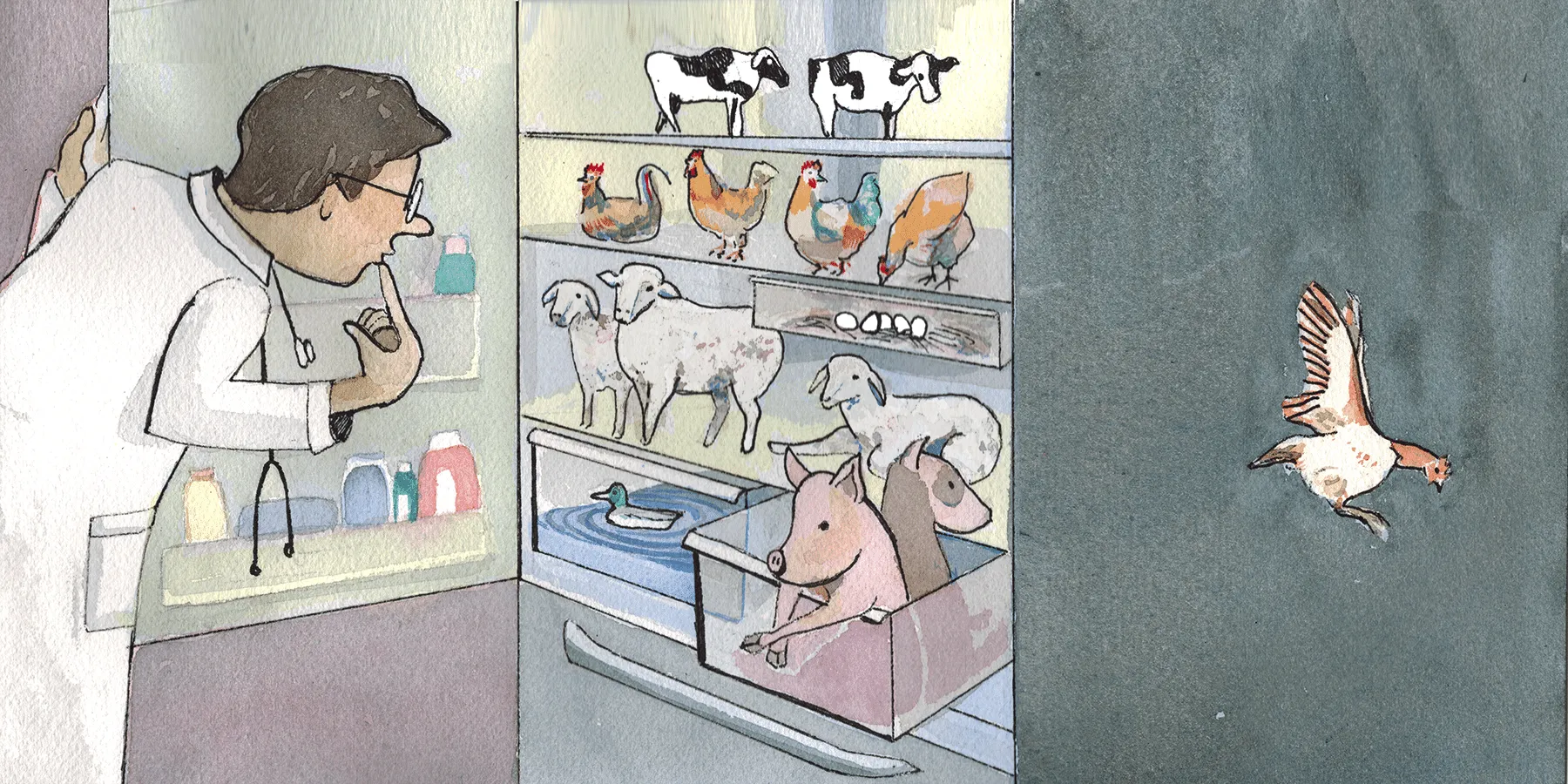The earth provides enough to satisfy every man’s need but not every man’s greed.
Mahatma Gandhi1
When we’re dead and buried, our bones will keep hurting.
Ignacio Davalos2
Human health is inextricably related to our surrounding environment—the air we breathe, the water we drink, the soil in which we grow our food. Practitioners, philosophers, and professional health associations have long recognized this connection. For example, American Medical Association House Policy H-135.938, “Global Climate Change and Human Health,” tasks physicians with the responsibility “to assist in educating patients and the public on environmentally sustainable practices.”3 So, what should be done by stewards of health, such as clinicians and public health officials, when humans threaten the world upon which they rely?
Meat processing and consumption is at an all-time worldwide high due to an increase in both average per-person consumption and number of consumers, particularly within middle-income countries.4,5 This demand is being met by an oligarchy of meatpacking companies composing the global meat sector that were collectively worth 1.3 trillion USD in 2021 and are projected to be worth 1.6 trillion USD by 2027.6 Meat consumption, particularly red and processed meat, is linked to negative health outcomes, including increased total mortality, coronary artery disease, and colorectal cancer.7 Yet the industry’s practices have wider implications for efforts to promote human health that must be considered.
There is a human, animal, and environmental cost to raising, slaughtering, and processing over 100 billion animals worldwide annually.5 Livestock, slaughterhouse, and meat processing workers “have some of the highest rates of occupational injury and illness” in the United States and are often under duress while working.2 Animal agriculture contaminates fresh water and soil sources with pollutants, such as livestock waste.4 It also contributes to deforestation, as 63% of clearing in the Brazilian Amazon is due to cattle ranching.8 Moreover, the sector produces almost 15% of total greenhouse emissions,4 which contribute to extreme weather conditions and subsequent food safety and distribution issues,9 as well as respiratory diseases from smog and air pollution.9,10
We, as stewards of health, have responsibilities to help ourselves, our patients, and our communities. This issue of the AMA Journal of Ethics seeks to educate readers on how meat is processed and consumed and on the resulting health consequences for humans, animals, and the environment. In doing so, the collected papers question how health professionals can and should respond to the challenges that meat consumption creates both within clinical practice and at an institutional level. These articles are brought to you by a diverse array of contributors who share their expertise and unique perspectives on how meat is shaping our health. We thank them—and you, the reader—for exploring how the meat on our plates transcends our bodies.
References
-
Walia N. Remembering Mahatma, his philosophy on environment. Tribune India. Updated October 3, 2019. Accessed October 4, 2022. https://www.tribuneindia.com/news/archive/amritsar/remembering-mahatma-his-philosophy-on-environment-842002
-
Davalos I. Quoted in: “When We’re Dead and Buried, Our Bones Will Keep Hurting”: Workers’ Rights Under Threat in US Meat and Poultry Plants. Human Rights Watch; 2019. Accessed May 26, 2022. https://www.hrw.org/sites/default/files/report_pdf/us0919_web.pdf
-
American Medical Association. Global climate change and human health H-135.938. Updated 2022. Accessed October 4, 2022. https://policysearch.ama-assn.org/policyfinder/detail/climate%20change?uri=%2FAMADoc%2FHOD.xml-0-309.xml
-
Godfray HCJ, Aveyard P, Garnett T, et al. Meat consumption, health, and the environment. Science. 2018;361(6399):eaam5324.
-
Sanders B. Global animal slaughter statistics and charts: 2020 update. Faunalytics. July 29, 2020. Accessed October 4, 2022. https://faunalytics.org/global-animal-slaughter-statistics-and-charts-2020-update/
-
Global meat market to reach US $1.61 trillion by 2027, impelled by rising health consciousness among consumers. IMARC Group. March 10, 2022. Accessed May 26, 2022. https://www.imarcgroup.com/global-meat-market
- Richi EB, Baumer B, Conrad B, Darioli R, Schmid A, Keller U. Health risks associated with meat consumption: a review of epidemiological studies. Int J Vitam Nutr Res. 2015;85(1-2):70-78.
-
Potapov PV, Stehman SV, Smith-Rodriguez K, Okpa C, Aguilar R. Types and rates of forest disturbance in Brazilian Legal Amazon, 2000-2013. Sci Adv. 2017;3(4):e1601047.
-
Climate impacts on human health. US Environmental Protection Agency. Accessed October 4, 2022. https://climatechange.chicago.gov/climate-impacts/climate-impacts-human-health#Air
-
Domingo NGG, Balasubramanian S, Thakrar SK, et al. Air quality-related health damages of food. Proc Natl Acad Sci U S A. 2021;118(20):e2013637118.




